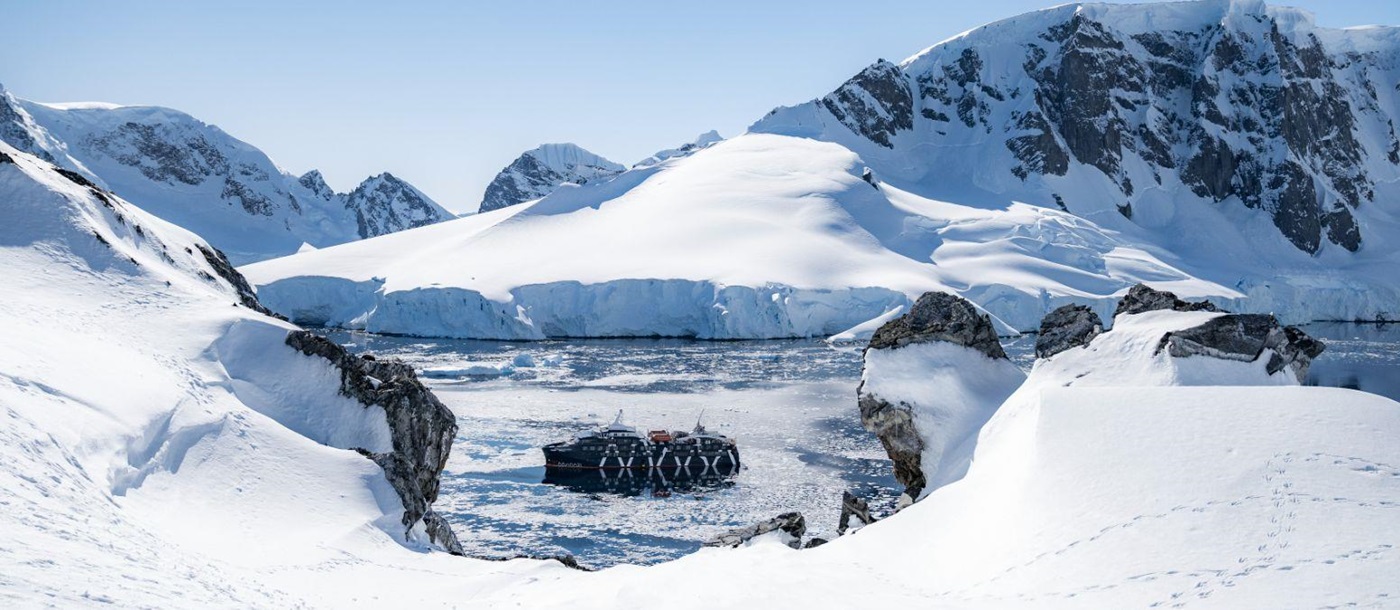Red Savannah’s Antarctica specialists have enjoyed cruising Antarctica and share their knowledge on what to expect and the most frequently asked questions about an Antarctica cruise. So, if exploring the white continent of Antarctica is high on your travel bucket list and you want to find out more, read on.
When is the best time to visit Antarctica?
The season extends from November to March. Early in the season (November and December) is great for photography with crisp, clean snow and floating icebergs providing a picture-perfect backdrop. Penguin rookeries display their courtship and nest building rituals, while in the Falklands and South Georgia the spring flowers will be in bloom. Around Christmas chicks start to hatch and it’s a great time to see the wildlife such as penguins, albatross, elephant seals and whales. This is also the warmest time to visit, with 24 hours of daylight. By February and March, penguin colonies are bustling with activity, leopard seal pups are practising their hunting skills and whale spotting opportunities are at their peak.
How long is an Antarctica voyage?
Itineraries vary in length from as little as six days up to 17 days depending on how much you want to see. As it’s likely to be a once-in-a-lifetime-trip. I’d recommend you go for as long as time and budget will allow.
Is an Antarctica cruise suitable for everyone?
Yes, almost anyone. There is a lower age limit of five years old, as it’s not a suitable holiday for small children, and there is no upper age limit for many operators. The ships are well configured for those with limited mobility and the expedition team are on hand to ensure safe Zodiac access. They will try their utmost to allow guests with limited mobility to set foot on the White Continent There are some activities that will be limiting for those who are less physically fit or less mobile, for instance ice trekking, kayaking or snowshoeing, but wonderful panoramic views of breathtaking Antarctic landscapes can frequently be enjoyed by simply spending time out on deck.
What wildlife can I expect to see and how close will I get?
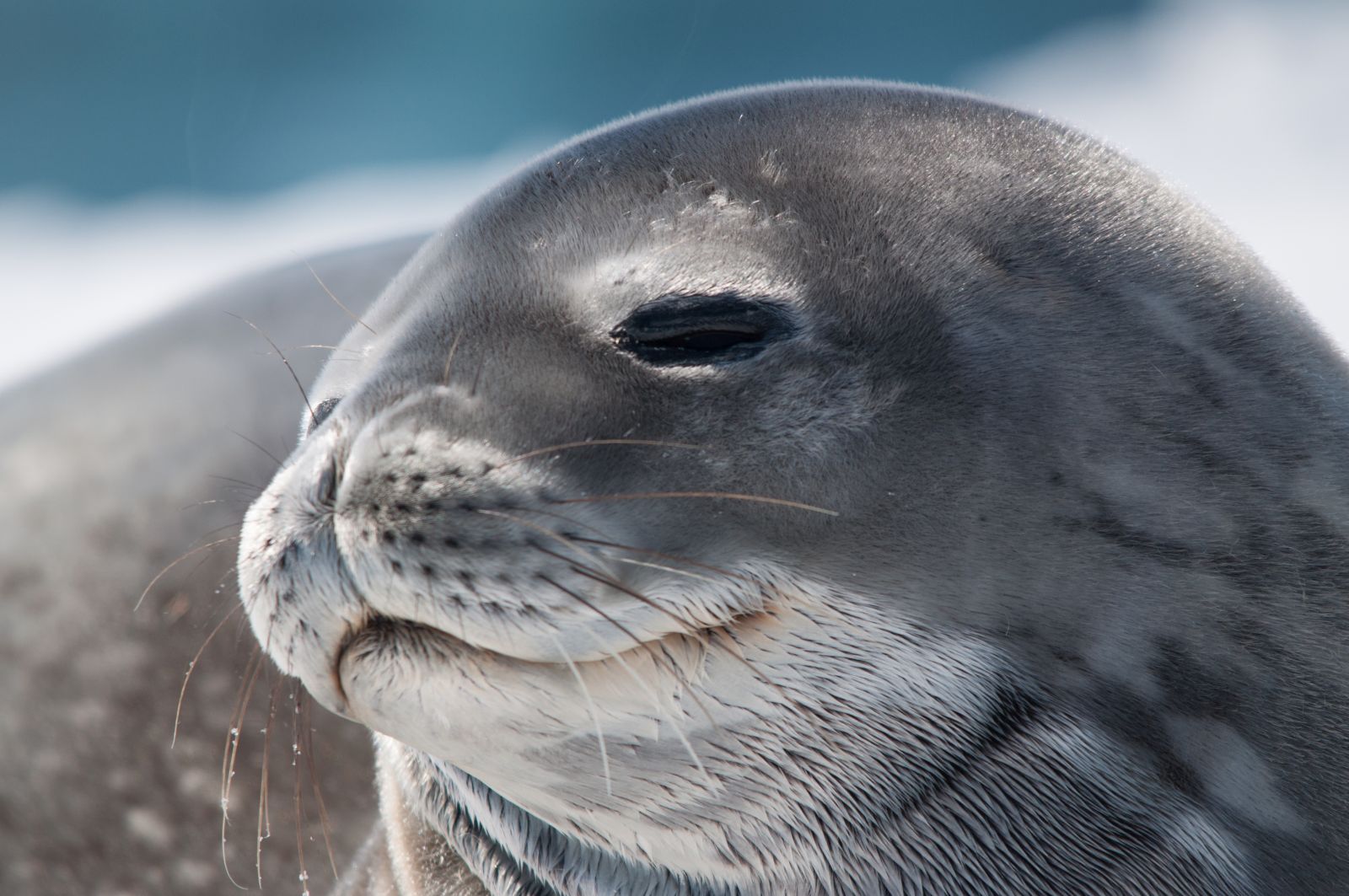
You can expect to see many varieties of penguin, albatross, seals, whales and frigate birds. If you’re lucky you may also see orcas, leopard seals and emperor penguins. See our Antarctica wildlife blog for a more detailed insight.
It’s possible to get very close to the wildlife and they are not scared of human visitors. Guides will advise you not to approach the animals and to give them at least two-metres of space. If they approach you, however, simply stay still and let them come. One of my best moments was when a seal pup came and rested its head on my wellington! I’m lucky to have had some very special wildlife experiences in Antarctica; seeing a whale teaching its calf to dive was a real privilege and something I’ll never forget.
What do I need to pack?
For a full list of essential items to take, see our Antarctica Travel Guide. However, as a rule you will need:
What are the cabins like onboard?
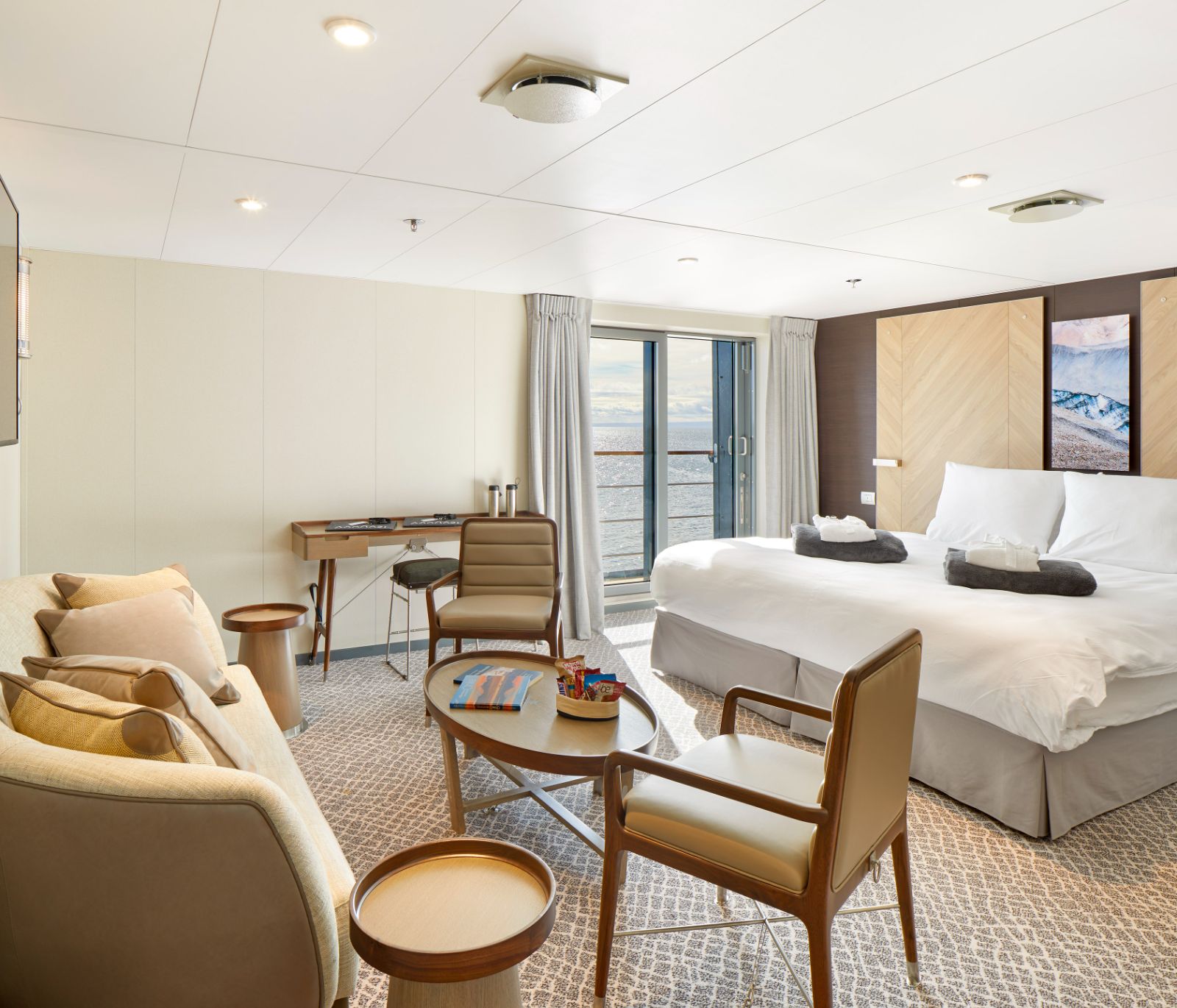
What will I learn from the onboard lectures?
Pre and post trip lectures take place every day with the team onboard comprising marine biologists, Polar wildlife specialists, geologists, scientific researchers, Polar historians and photographers. Pre-dinner lectures highlight what guests can expect to see and how to prepare for the next day’s adventure. You can expect lectures on topics including Polar marine life, climate change, the early Polar explorers and the fascinating world of icebergs.
What are the dining options?
The first point to note is that an Antarctica cruise isn’t like any other cruise and dressing for dinner is smart/casual so there’s no need to pack your evening wear, best jewellery or black tie.
There is usually an open seating policy onboard and the expedition team may join guests for dinner. As experts in their field they love to talk passionately about their specialist subjects so it’s a great chance to learn more about this amazing region. All tastes and diets are catered for by the team of onboard chefs and certain ships also have 24-hour room service.
Who goes on an Antarctica cruise?
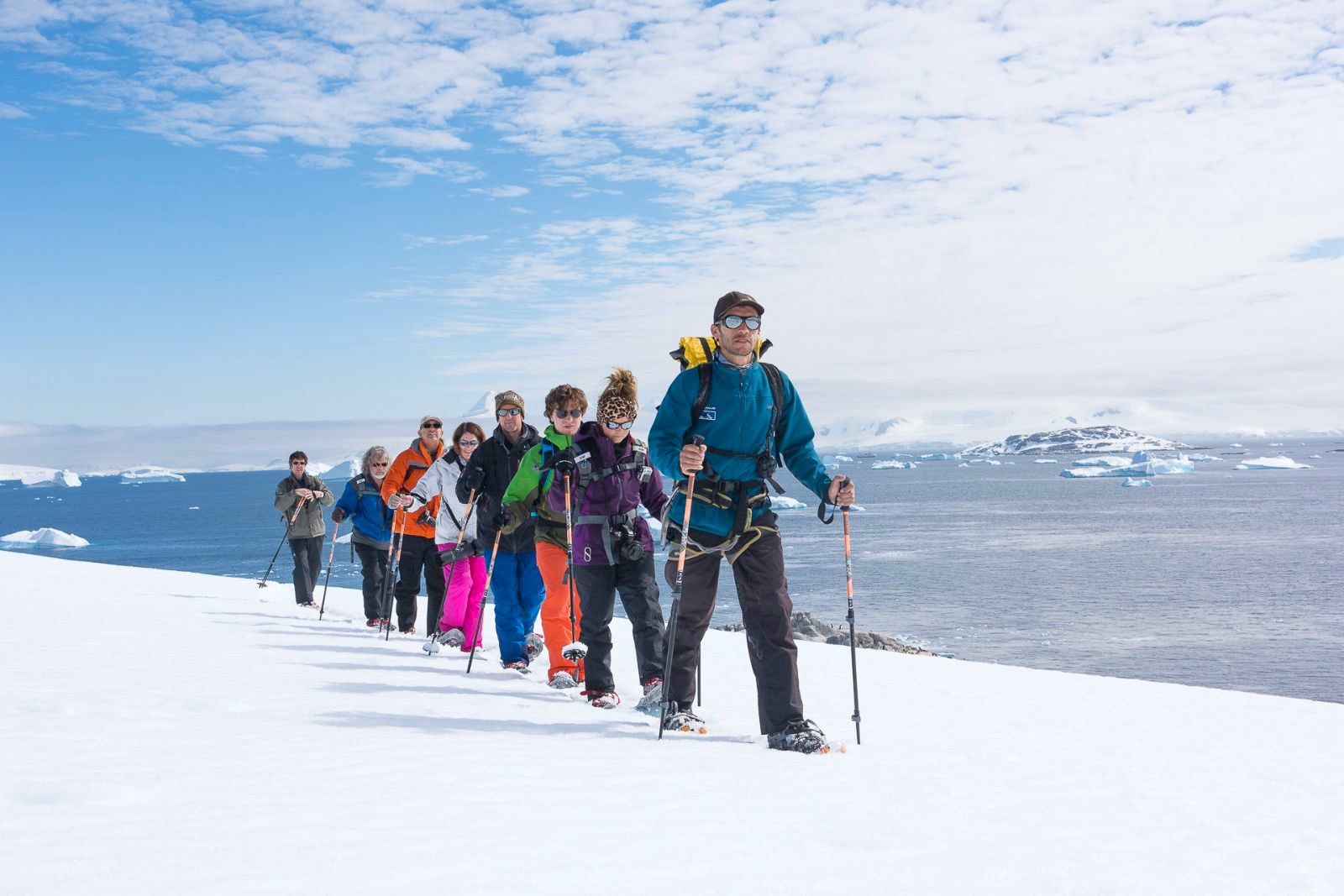
You can typically expect a lot of solo travellers on-board as well as couples. There is a great social aspect associated with Antarctica cruising, with lots of memorable experiences and talking points. You’ll meet like-minded travellers of all nationalities and, very likely make some lifelong friends.
Are there any surprises or misconceptions?
Most people think of Antarctica cruise ships as very large cruise liners but that’s not the case. They are purpose-built ships and much smaller than most people expect, accommodating between 76 – 264 guests. There is also a high level of service with a staff to guest ratio of up to 1:2.
What is a typical day like on board?
Your day usually begins with a generous breakfast followed by a briefing on the morning's excursion, to help you prepare for what you are going to see and do. After your morning adventure, return to the vessel - perhaps spending some time warming up in the sauna before lunch! The captain safely navigates you to your next destination while you dine, and then you can usually expect an update on the weather conditions and the plan for an afternoon excursion. Excursions usually last between two and three hours, and time back onboard gives you time to relax, spend time out on deck or perhaps visit the bridge and keep a lookout for whales. Dinner will follow, and then you may wish to relax with a drink while you enjoy further magical scenery - or sailor's tales in the bar.
Will I be cold?
The average temperature in Antarctica is around -10 degrees Celsius so, yes, you may be cold at times! All guests, however, are given a complimentary Polar parka on arrival which is super warm and provides great protection from the elements. In my experience you can expect some clear, sunny days so it can at times feel much milder - particularly around the Antarctic Peninsula, where temperatures often hover around freezing or slightly higher in the summer months.
Will I get seasick?
The Drake Passage can be choppy, and the crossing takes approximately two days. However, when you arrive at the Antarctic Peninsula, the sea is usually much calmer. If you are susceptible then opt for a central cabin on a lower floor, and taking sea sickness medication will help you through the time on the Drake Passage if you are not taking a fly-cruise. All expedition ships are built for Polar waters and are fitted with stabilisers to ensure as smooth a voyage as possible.
Where do we depart from?
Expedition cruises depart from South America, either Punta Arenas in Chile or Ushuaia in Argentina. Land based stays are also possible, departing from Cape Town in South Africa. For further information please refer to our guide on How to get to Antarctica.
How much will an Antarctica cruise cost?
A private cabin on a quality expedition cruise starts from £9,000 per person, excluding flights.
Are there any destinations I could I combine Antarctica with?
There are lots of options available if you’d like to extend your holiday. I would recommend adding a few nights in Argentina's Iguazu Falls post-cruise to relax and enjoy a complete contrast of landscapes. For those who are keen to immerse themselves more fully in local culture, add a few nights in Buenos Aires and learn to Tango! For those who like the great outdoors then visiting Torres del Paine National Park in Chile is a great option. Finally, for wine aficionados, then Chile and Argentina’s winelands must be on the agenda.
What are your top tips for embarking on an Antarctica cruise?
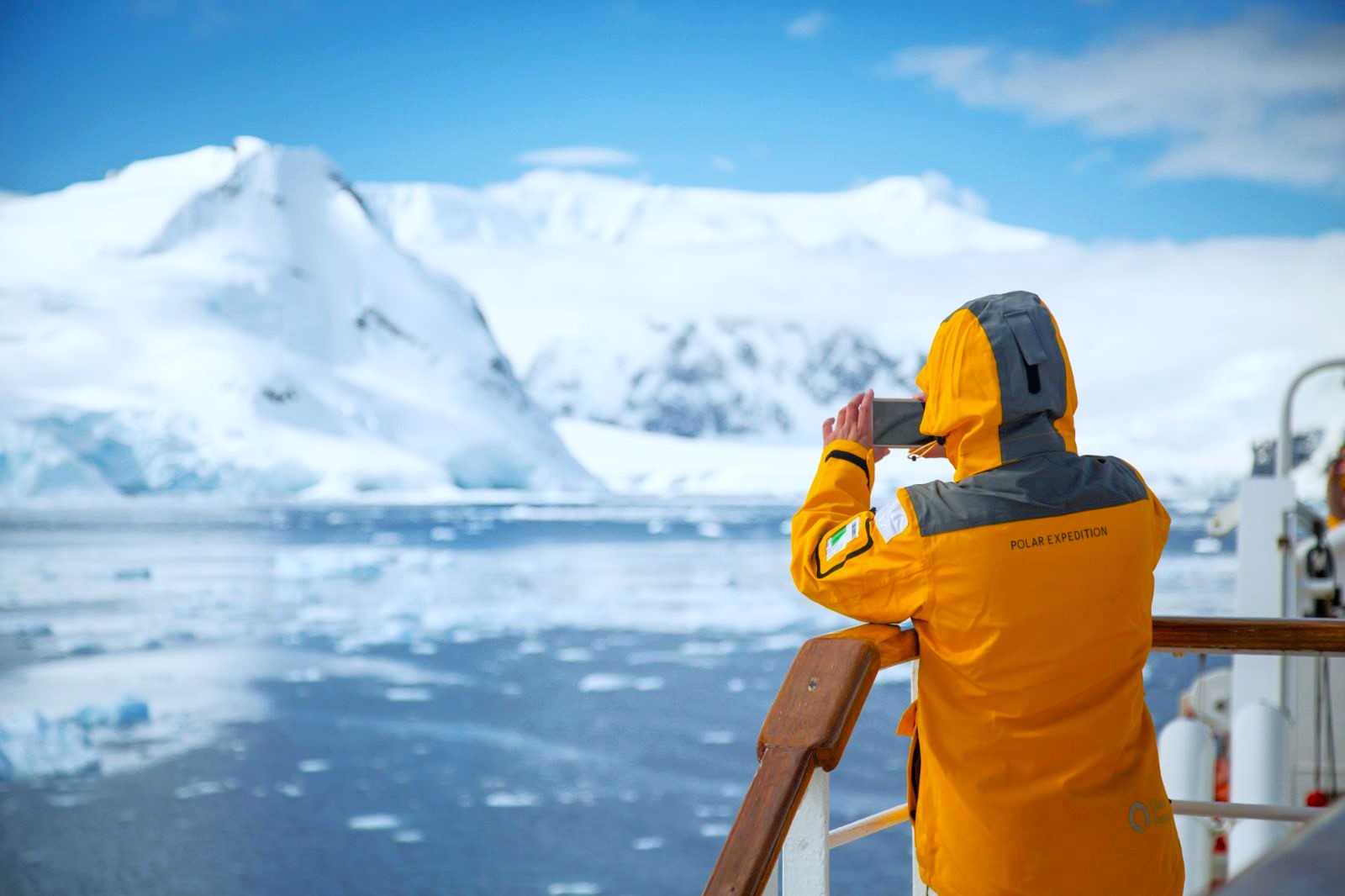
Carry your parka everywhere! A wildlife sighting can happen at any moment and if you’re not ready to jump to attention when the captain announces it from the bridge then you may miss it.
Go and speak to the captain. The captain has an open-door policy so you can go visit and learn more about the workings on the bridge. The captain's navigational team are also very happy to answer any questions guests may have.
If you have more time do a longer itinerary. South Georgia really is the jewel in crown of Antarctica and one of my all-time favourite places. Where else can you share the beach with half a million King penguins? The explorer, Shackleton is buried there. It is also home to the old whaling stations, a remnant of Antarctica history and fascinating to learn about. I would also recommend extending your cruise to take in the Falkland Islands.
Are laundry services available onboard?
Yes, laundry services are available at an extra cost.
Will I get a phone signal or internet access?
Satellite WiFi is available on all ships. Some may charge for this so enquire in advance. The signal is variable, however, so it may be difficult to stream content. There is no phone signal but it is possible to get online.
For more information about the luxury Antarctica cruises offered by Red Savannah, speak to our Antarctica experts on 01242 787 819.
